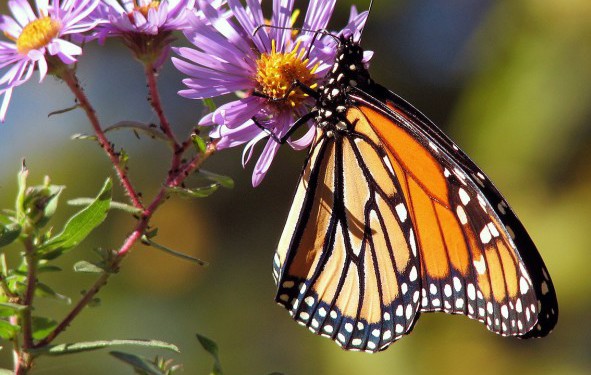Matthew Burgess, poet, educator, and long-time T&W poet-in-residence, teaches young students about imaginative description in this lesson on poetry. Students engage in group writing, independent writing, and physical movement, all of which encourage them to be imaginative and detailed in their writing.
Lesson Overview
Grade(s) taught: 1st
Genre(s) taught: Poetry
Download: Earth Day Delicious Details
Common Core State Standards: (Refer to the Anchor Standards for English Language Arts > Language > Grade 1 and English Language Arts > Writing > Grade 1)
- ELA-LITERACY.W.1.2
Write informative/explanatory texts in which they name a topic, supply some facts about the topic, and provide some sense of closure. - ELA-LITERACY.L.1.1.D
Use personal, possessive, and indefinite pronouns - ELA-LITERACY.L.1.1.F
Use frequently occurring adjectives.
Guiding Questions:
- How can we improve our powers of description by imaginatively “becoming” the animals that we are describing?
- What are some other ways to embody—and viscerally appreciate—the powers of strong description?
LESSON
Introduction
Open with a brief review of our expanding list of poetic devices: personification, alliteration, ode, delicious details, and repetition.
Discuss the concept of Earth Day. Engage students in conversation to explore its significance.
Briefly explain the concept of “endangered animals.” Read aloud from the World Wildlife Fund’s list of endangered species, just to get the ideas effervescing in the room. (First-graders receive pleasure just by hearing the names of animals read aloud.)
Main Activity
Ask students to suggest words and phrases for a collaborative poem, and write the poem on chart paper:
- Ask for an animal. (Ex: Butterfly)
- Describe it. (Wings, eyes, etc.)
- Use delicious details to make it come alive. (“a long tongue to drink nectar from the flowers”)
- Envision it in different situations. “What would happen if…” etc.
- On the board, write sentences immediately responding to students’ ideas.
Example:
“I’m a Butterfly”
I have a long tongue
to drink nectar from the flowers.
My eyes shine bright in the black night.
If someone tries to capture me,
my eyes turn red like lava.
I live in Madagascar, Africa.
I like to fly in the sky.
I wait for danger to go away—
then I flap my wings
and flutter to somewhere warm.
Now watch me fly away…
Transition
Transition the class into independent writing. Ask students to choose their own animals, and to become their animal of choice using the first person: “I.” This is an important step to emphasize.
Circulate around the room, helping poets when necessary.
Closing
Return to the class’ collaborative poem and ask students to create “poses” that somehow interpret the lines of the poem. We begin as “statues,” hands at our sides. Then, read the first line aloud and ask them to let the line of poetry move their body into a pose or a shape or a brief movement. Then glance around for something particularly brilliant, often asking a particular student to come to the front and “show us how it’s done.” Students are very open to this process, and it’s a lot of fun. Continue for each line. (Sometimes you can combine two lines if one of them doesn’t seem to offer any good poses or for the sake of making a more cohesive/less repetitive performance.)
Note: This closing activity can be adapted for various purposes. Recently, I used these “Poetry Poses” to create a performance for the class’ anthology celebration. It is a great way to get every poet on stage for the celebration, while only having a few serve as student representatives by reading their poems aloud.
Materials:
List of endangered animals
Chart paper for class poem
Vocabulary: Personification, alliteration, delicious details, endangered, Earth Day
Multi-Modal Approaches to Learning: This lesson connects with aural learners, hearing the names of animals to stimulate thoughts; kinesthetic learners, using sensory details in the poetry and later physically acting out the words; interpersonal learners, the creation of a collaborative poem; and intrapersonal learners, independent writing where the student becomes their chosen animal
Matthew Burgess is an Associate Professor at Brooklyn College. He is the author of eight children's books, most recently The Red Tin Box (Chronicle) and Sylvester’s Letter (ELB). Matthew has edited an anthology of visual art and writing titled Dream Closet: Meditations on Childhood Space (Secretary Press), as well as a collection of essays titled Spellbound: The Art of Teaching Poetry (T&W). More books are forthcoming, including: As Edward Imagined: A Story of Edward Gorey (Knopf, 2024), Words With Wings & Magic Things (Tundra, 2025), and Fireworks (Harper Collins, 2024). A poet-in-residence in New York City public schools since 2001, Matthew serves as a contributing editor of Teachers & Writers Magazine.




